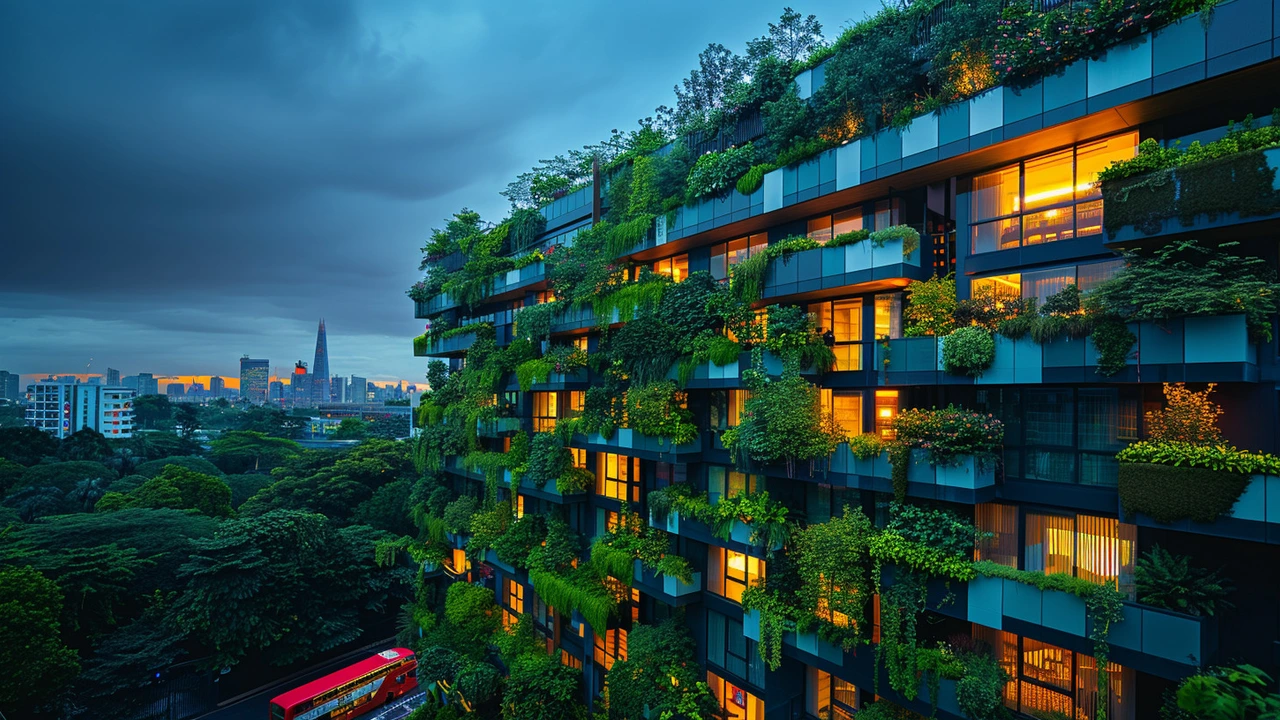This article explores how constructivist architecture plays a crucial role in the realm of sustainable design. By integrating eco-friendly principles with innovative building techniques, this style not only promotes environmental responsibility but also enhances aesthetic and functional aspects. Dive into the essential elements, benefits, and real-world examples of constructivist architecture contributing to a greener future.
Green Architecture: Practical Strategies for Comfortable, Low-Impact Buildings
Buildings cause nearly 40% of global carbon emissions. That single fact makes green architecture not just trendy, but necessary. If you want a home or project that uses less energy, costs less to run, and feels healthier, focus on design decisions that actually work—not buzzwords.
First, think of the site as part of the system. Place living spaces to catch winter sun and avoid hot afternoon exposure. Use trees and shading to block heat in summer. Simple orientation and overhangs can cut cooling needs a lot without fancy tech.
Simple design moves that cut energy
Start with passive strategies: airtight construction, good insulation, and high-performance windows. Those basics reduce energy demand so any mechanical system runs smaller and cheaper. Add cross-ventilation and thermal mass—like a concrete slab or stone wall—to stabilize indoor temperatures. Consider a compact floor plan; less surface area means less heat loss and lower bills.
For heating and cooling, choose systems sized to the lowered demand. Heat pumps are efficient, flexible, and work with solar panels. If you use HVAC, think zoning so you only condition occupied rooms. Recover heat from exhaust air with a heat-recovery ventilator to keep fresh air without wasting energy.
Materials, water, and real-world costs
Pick materials that last and have low embodied carbon. Engineered wood, recycled steel, and low-carbon concrete reduce upfront emissions. Avoid materials that off-gas harmful chemicals; better indoor air quality makes a noticeable difference in comfort and health. Use rainwater harvesting for irrigation and low-flow fixtures indoors to cut water use.
Green features don’t always mean higher budgets. Prioritize measures that pay back fast: extra insulation, airtightness, LED lighting, and quality windows. Solar panels and efficient appliances often pay back in a decade or less depending on incentives in your area. Look for local rebates and green financing—many cities help homeowners and developers go green for less out-of-pocket cost.
For renovations, target the envelope first: seal leaks, add insulation, and replace old windows where heat loss is worst. Small upgrades like programmable thermostats and smart controls reduce waste immediately. If you can, model energy use before you build or renovate; even basic energy models show where money makes the most impact.
Certification systems—LEED, Passive House, Living Building Challenge—help you set goals, but don’t chase badges. Use them as guides: pick the standards that fit your budget and climate. Finally, think beyond the building: choose a walkable site, plan for bikes and transit, and favor native landscaping to support local ecosystems. Those choices make a building greener and a neighborhood better to live in.
Simple projects show big results. A green roof reduces stormwater runoff, adds insulation, and cools the building; a 1,000 sq ft vegetated roof can shave hundreds off cooling costs in hot months. Retrofitting a leaky mid-century house with new insulation and heat-pump HVAC commonly cuts energy bills by 30–50%. If you're planning a project, make a checklist: site orientation, airtightness test, insulation levels, window performance, and a plan for water use. Talk with a designer who runs energy models — you’ll save time and money on materials.

